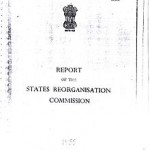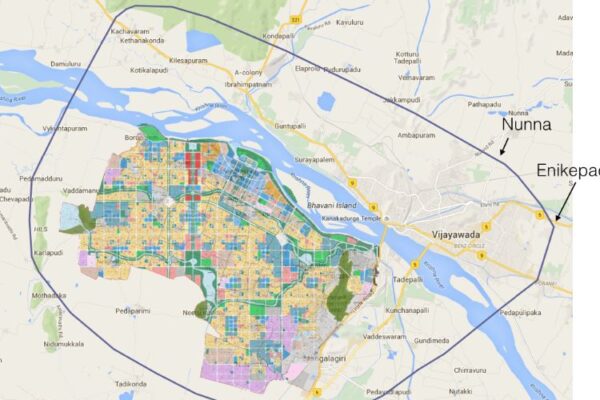The States Reorganization Commission unanimously adopted the principle of linguistic homogeneity as the basis to recommend the reorganization of states. But why there were differences with regard to Hyderabad State, and how and what finally led to the unification are explained in the following excerpts from Sri Krishna Committee Report.
These excerpts provide answers on whether the merger between Andhra and Telangana regions was imposed against the latter’s wishes, why SRC indulged in flip-flop on the issue of unification and what finally weighed in favour of Visalandhra. The emphasis in some parts is ours.
 1.1.04 After the formation of Andhra state in October, 1953, the demand for creation of other linguistic states gained momentum. On December 22, 1953, the then Prime Minister, Pt. Jawaharlal Nehru, announced in the Lok Sabha the decision to set up a States Reorganization Commission to examine “objectively and dispassionately” the whole question of the reorganization of the states of the Indian Union. Accordingly, the Government of India, vide Ministry of Home Affairs resolution, dated December 29, 1953, appointed the “States Reorganization Commission” headed by Justice S. Fazal Ali with H.N. Kunzru and K.M. Panikkar as members, to examine and suggest a rational solution for the reorganization of states, based on language. The Commission submitted its report to the Government of India in 1955. “The Commission, after consultations and interactions with various groups of people, is reported to have found the public will in favour of linguistic reorganization. The rationale was that language being the most faithful reflection of the culture of an ethnic group, ethno-lingual boundaries would be considered the most stable and suitable arrangement for the effective working of democratic entities and institutions. It was also perceived that the same would also have the advantage of ease for people‟s interaction with the government.”
1.1.04 After the formation of Andhra state in October, 1953, the demand for creation of other linguistic states gained momentum. On December 22, 1953, the then Prime Minister, Pt. Jawaharlal Nehru, announced in the Lok Sabha the decision to set up a States Reorganization Commission to examine “objectively and dispassionately” the whole question of the reorganization of the states of the Indian Union. Accordingly, the Government of India, vide Ministry of Home Affairs resolution, dated December 29, 1953, appointed the “States Reorganization Commission” headed by Justice S. Fazal Ali with H.N. Kunzru and K.M. Panikkar as members, to examine and suggest a rational solution for the reorganization of states, based on language. The Commission submitted its report to the Government of India in 1955. “The Commission, after consultations and interactions with various groups of people, is reported to have found the public will in favour of linguistic reorganization. The rationale was that language being the most faithful reflection of the culture of an ethnic group, ethno-lingual boundaries would be considered the most stable and suitable arrangement for the effective working of democratic entities and institutions. It was also perceived that the same would also have the advantage of ease for people‟s interaction with the government.”
1.1.05 SRC itself in the above context concluded in their Report:
“It is obviously an advantage that Constituent units of a federation should have a minimum measure of internal cohesion. Likewise, a regional consciousness, not merely the sense of a negative awareness of absence of repression of exploitation but also in the sense of scope of positive expression of the collective personality of a people inhabiting a state or a region may be conducive to the contentment and well being of the community. Common language may not only promote the growth of such regional consciousness but also make for administrative convenience. Indeed, in a democracy, the people can legitimately claim and the government has a duty to ensure that the administration is conducted in a language which the people can understand.”
The States Reorganization Commission, accordingly, unanimously adopted the principle of linguistic homogeneity as the basis to recommend the reorganization of states. Based on the recommendations, the States Reorganization Act was passed by the Parliament and came into effect on November 1, 1956.
1.1.06 The SRC in its report also mentioned:
“further reorganization of States in the South is dependent in a large measure on the future of Hyderabad. ………There has been a general demand, with popular support behind it, that the State should be disintegrated on the basis of linguistic and cultural affinity.”‟5 Considering the above and other issues, the SRC recommended that:
(i) the Kannada-speaking districts of Raichur and Gulbarga be transferred to the then Mysore State (the proposed Karnataka State),
(ii) the Marathwada districts should also be detached from Hyderabad
State; and as for the primarily Telugu speaking areas, the Commission‟s recommendation was that
(iii) the residuary State of Hyderabad might unite with Andhra after the General Elections likely to be held in about 1961, if by a two-thirds majority the Legislature of Hyderabad State expresses itself in favour of such a unification.
The SRC also recommended that the residuary state should continue to be known as Hyderabad state and should consist of Telugu-speaking districts of the then princely state of Hyderabad, namely, Mahabubnagar, Nalgonda, Warangal (including Khammam), Karimnagar, Adilabad, Nizamabad, Hyderabad and Medak, along with Bidar district, and the Munagala enclave in the Nalgonda district belonging to the Krishna district of Andhra.









